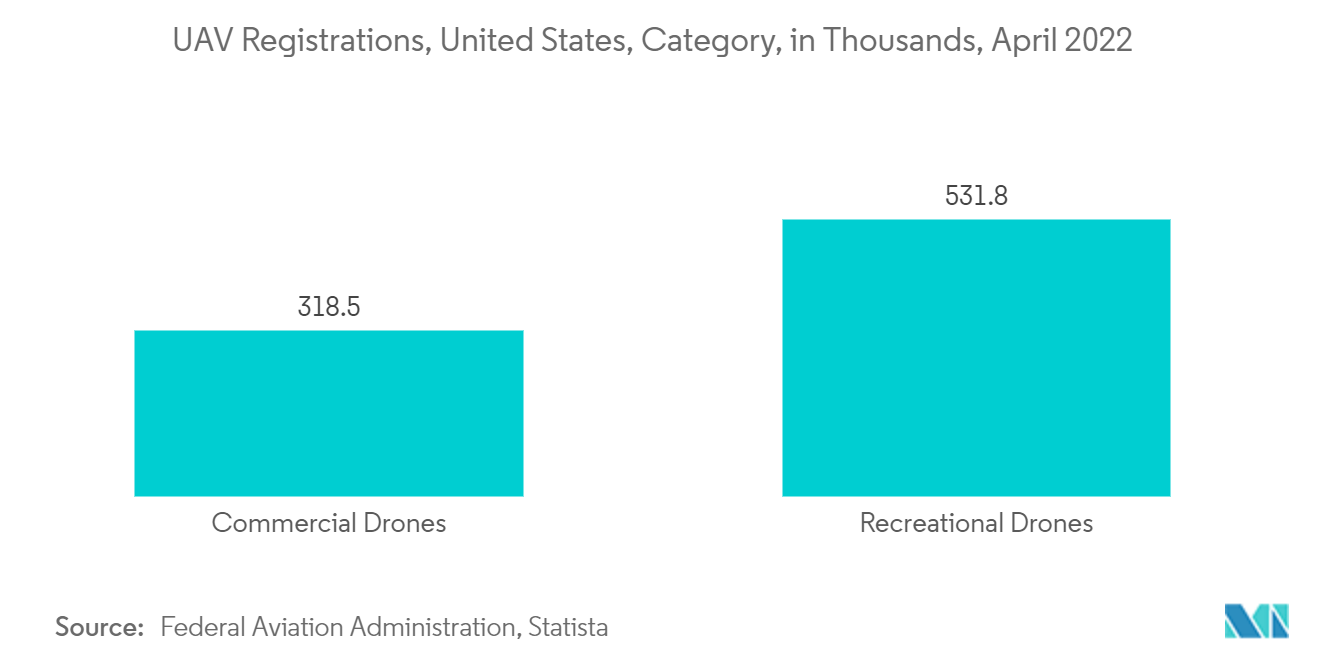Market Trends of North America Small UAV Industry
This section covers the major market trends shaping the North America Small UAV Market according to our research experts:
Agriculture Industry to Witness Highest Growth During the Forecast Period
Small UAVs are increasingly used for agricultural applications, such as field mapping, wherein drones are deployed to enhance the yield of the land by analyzing the crops and spraying fertilizers without disturbing the soil fertility. For instance, Rantizo, an Iowa-based company, has been using drones to spray pesticides over cornfields, soybean plots, vineyards, blueberry farms, vegetable rows, and hemp fields. In November 2021, Rantizo became the first company to get approval from the Federal Aviation Administration (FAA) to operate the DJI Agras T-30 drone for agricultural applications.
Similarly, as of September 2021, the Houston-based Startup Hylio was looking to push into the medical-cannabis space with crop-spraying drones. Hylio has trialed with more than 500 clients, ranging from small- and medium-sized farmers to large-scale corporate farms and agricultural service providers. The increasing use would also encourage new players to venture into the segment, driving the rapid growth of the segment during the forecast period.

The United States is Projected to Show Highest Growth During the Forecast Period
The United States is one of the largest users of UAV technologies both in the commercial and defense sectors. Recent relaxations in small UAV operations in the country have resulted in a splurge in demand for UAVs from the end-user sectors. Previously, small drone operations over people were limited to operations over people directly participating in the operation, located under a covered structure, or inside a stationary vehicle unless operators had obtained a waiver from the FAA. However, in December 2020, the FAA permitted drone flight over people and permitted small UAV operations at night. This modification in the otherwise strict regulations is anticipated to be a significant step toward the eventual use of small UAVs for widespread commercial deliveries. The new rules also eliminate requirements that drones be connected to the internet to transmit location data but require that they broadcast remote ID messages via radio frequency. A favorable regulatory framework is anticipated to drive the adoption of small UAVs further during the forecast period.
According to the FAA, there were 855,860 drones registered in the United States by May 2022. Of these, 63% of registrations (536,183) were for recreational purposes, and 37% (316,075) were for commercial operations. Also, the FAA has awarded 277,845 remote pilot certificates. Thus, the growing use of drones for various commercial and defense applications drives market growth across the United States.


